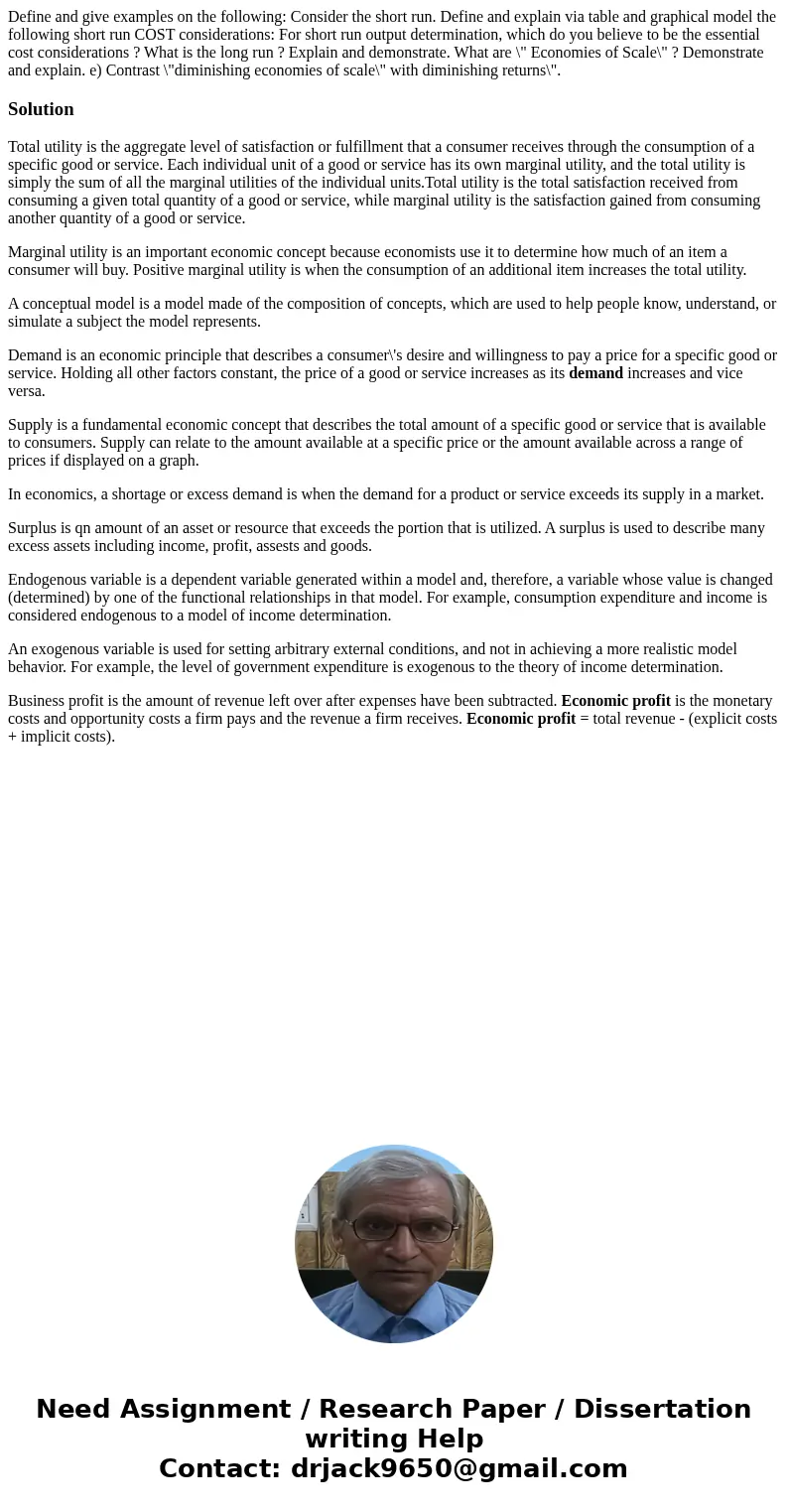Define and give examples on the following Consider the short
Solution
Total utility is the aggregate level of satisfaction or fulfillment that a consumer receives through the consumption of a specific good or service. Each individual unit of a good or service has its own marginal utility, and the total utility is simply the sum of all the marginal utilities of the individual units.Total utility is the total satisfaction received from consuming a given total quantity of a good or service, while marginal utility is the satisfaction gained from consuming another quantity of a good or service.
Marginal utility is an important economic concept because economists use it to determine how much of an item a consumer will buy. Positive marginal utility is when the consumption of an additional item increases the total utility.
A conceptual model is a model made of the composition of concepts, which are used to help people know, understand, or simulate a subject the model represents.
Demand is an economic principle that describes a consumer\'s desire and willingness to pay a price for a specific good or service. Holding all other factors constant, the price of a good or service increases as its demand increases and vice versa.
Supply is a fundamental economic concept that describes the total amount of a specific good or service that is available to consumers. Supply can relate to the amount available at a specific price or the amount available across a range of prices if displayed on a graph.
In economics, a shortage or excess demand is when the demand for a product or service exceeds its supply in a market.
Surplus is qn amount of an asset or resource that exceeds the portion that is utilized. A surplus is used to describe many excess assets including income, profit, assests and goods.
Endogenous variable is a dependent variable generated within a model and, therefore, a variable whose value is changed (determined) by one of the functional relationships in that model. For example, consumption expenditure and income is considered endogenous to a model of income determination.
An exogenous variable is used for setting arbitrary external conditions, and not in achieving a more realistic model behavior. For example, the level of government expenditure is exogenous to the theory of income determination.
Business profit is the amount of revenue left over after expenses have been subtracted. Economic profit is the monetary costs and opportunity costs a firm pays and the revenue a firm receives. Economic profit = total revenue - (explicit costs + implicit costs).

 Homework Sourse
Homework Sourse